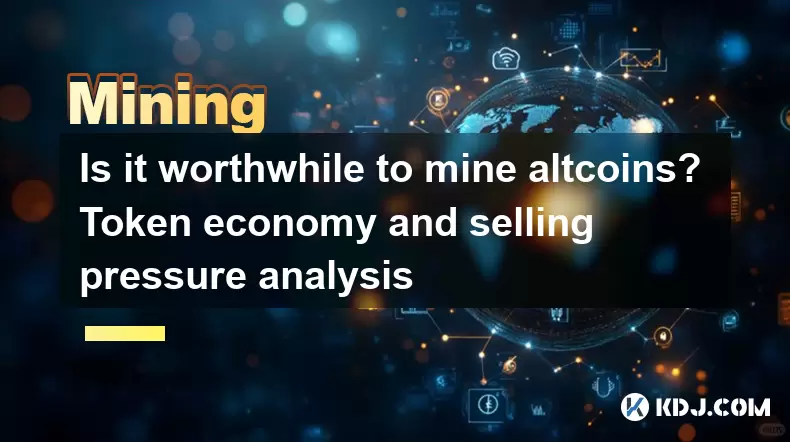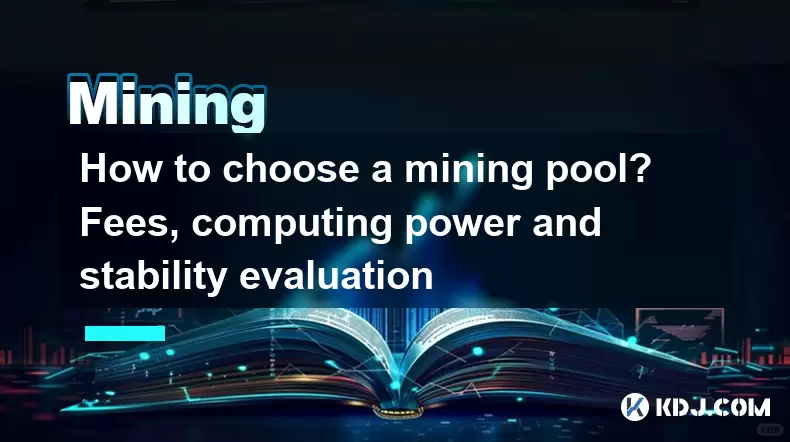-
 Bitcoin
Bitcoin $102,881.1623
-0.60% -
 Ethereum
Ethereum $2,292.8040
-5.48% -
 Tether USDt
Tether USDt $1.0004
0.02% -
 XRP
XRP $2.0869
-2.02% -
 BNB
BNB $634.6039
-1.35% -
 Solana
Solana $136.1527
-3.00% -
 USDC
USDC $1.0000
0.01% -
 TRON
TRON $0.2728
-0.45% -
 Dogecoin
Dogecoin $0.1572
-3.70% -
 Cardano
Cardano $0.5567
-5.07% -
 Hyperliquid
Hyperliquid $34.3100
-1.20% -
 Bitcoin Cash
Bitcoin Cash $462.5691
-2.33% -
 Sui
Sui $2.5907
-5.21% -
 UNUS SED LEO
UNUS SED LEO $8.9752
1.13% -
 Chainlink
Chainlink $12.0549
-4.93% -
 Stellar
Stellar $0.2381
-2.36% -
 Avalanche
Avalanche $16.9613
-3.47% -
 Toncoin
Toncoin $2.8682
-2.36% -
 Shiba Inu
Shiba Inu $0.0...01095
-3.70% -
 Litecoin
Litecoin $81.8871
-2.43% -
 Hedera
Hedera $0.1377
-5.36% -
 Monero
Monero $310.8640
-0.68% -
 Ethena USDe
Ethena USDe $1.0007
0.03% -
 Dai
Dai $1.0001
0.03% -
 Polkadot
Polkadot $3.3103
-5.19% -
 Bitget Token
Bitget Token $4.2168
-1.95% -
 Uniswap
Uniswap $6.4643
-8.14% -
 Pepe
Pepe $0.0...09329
-7.42% -
 Pi
Pi $0.5111
-5.23% -
 Aave
Aave $235.2340
-5.77%
What is the principle of Bitcoin mining? Equipment selection and profit analysis
Bitcoin mining relies on Proof-of-Work, where miners solve cryptographic puzzles using SHA-256 to validate transactions and earn rewards.
Jun 22, 2025 at 02:42 pm

Understanding the Core Mechanism Behind Bitcoin Mining
Bitcoin mining operates on a Proof-of-Work (PoW) consensus mechanism, which ensures that transactions are verified and added to the blockchain in a secure and decentralized manner. Miners compete to solve complex cryptographic puzzles using computational power. The first miner to find a valid solution gets the right to add the next block to the blockchain and is rewarded with newly minted Bitcoins along with transaction fees.
The hashing algorithm used in Bitcoin mining is SHA-256, which requires miners to perform trillions of calculations per second. This process not only secures the network but also regulates the issuance of new Bitcoins through a mechanism called block rewards, which halves approximately every four years.
Selecting the Right Hardware for Bitcoin Mining
Choosing appropriate mining equipment is crucial for profitability and efficiency. There are three main types of hardware historically used: CPUs, GPUs, and ASICs. However, due to the increasing difficulty of mining, ASIC (Application-Specific Integrated Circuit) miners have become the industry standard.
When selecting an ASIC miner, several factors should be considered:
- Hash rate: Measured in TH/s (terahashes per second), this determines how fast a miner can perform hashing operations.
- Power consumption: Expressed in watts, this affects electricity costs and overall efficiency.
- Cost: Initial investment must be weighed against expected returns over time.
- Cooling and noise: High-performance miners generate significant heat and noise, requiring proper ventilation and possibly soundproofing.
Popular models include the Bitmain Antminer S19 Pro, MicroBT WhatsMiner M30S++, and newer generations like the Antminer S21 series, each offering different balances between performance and energy use.
Setting Up a Mining Operation: Software and Pool Selection
Once hardware is chosen, miners must configure their setup with suitable software and join a mining pool if desired. Standalone solo mining is generally not recommended unless one possesses substantial hash power.
Key steps in setting up include:
- Installing firmware: Flashing the latest firmware onto the ASIC device ensures optimal performance and security.
- Configuring the miner: Setting static IP addresses or connecting via DHCP, and entering mining pool credentials.
- Selecting a mining pool: Popular options include F2Pool, Slush Pool, and Antpool, each with different fee structures and payout methods such as PPLNS (Pay Per Last N Shares) or proportional.
- Monitoring tools: Using platforms like Awesome Miner or built-in web interfaces to track hashrate, temperature, and uptime.
Joining a mining pool increases the frequency of payouts by combining hash power with others, although it results in shared rewards.
Calculating Profitability: Key Metrics and Cost Factors
Profitability in Bitcoin mining depends on multiple variables that fluctuate over time. To estimate potential earnings, miners should consider:
- Electricity cost: A critical factor, often expressed in cents per kilowatt-hour (kWh). Lower rates significantly improve margins.
- Block reward and difficulty: Block rewards halve every 210,000 blocks (~4 years), while difficulty adjusts every 2016 blocks to maintain a 10-minute average block time.
- Bitcoin price: Fluctuations in BTC’s market value directly affect revenue from mined coins.
- Hardware depreciation: Older models may become obsolete or less efficient compared to newer generations.
Online calculators like WhatToMine or CryptoCompare Mining Calculator allow users to input specific details such as hash rate, power draw, and local electricity cost to estimate daily or monthly profits.
Risks and Considerations in Bitcoin Mining Operations
While potentially lucrative, Bitcoin mining carries several risks that should not be overlooked:
- Volatility of Bitcoin price: Sharp drops can erode profits or lead to losses if operational costs remain fixed.
- Regulatory uncertainty: Some jurisdictions impose restrictions or bans on mining activities due to concerns about energy consumption.
- Heat and maintenance: Continuous operation leads to wear and tear, necessitating periodic repairs or part replacements.
- Network congestion: Increased mining difficulty reduces individual earnings unless hash power scales accordingly.
Miners should also evaluate the environmental impact of their operations, especially when relying on non-renewable energy sources.
Frequently Asked Questions
How much does it cost to start Bitcoin mining at home?
Initial costs depend heavily on the type and number of ASIC miners purchased. Entry-level machines can start around $1,000–$2,000, while large-scale setups may require tens of thousands. Additional expenses include cooling systems, electricity upgrades, and internet connectivity.
Is Bitcoin mining still profitable in 2024?
Profitability varies based on regional electricity prices, Bitcoin's market value, and mining difficulty. In areas with low electricity costs (<$0.05/kWh), mining can still yield positive returns, particularly with modern, efficient ASICs.
Can I mine Bitcoin using my personal computer?
Mining with a regular PC using CPU or GPU is no longer viable due to the dominance of ASIC miners. The computational difficulty has increased to a level where only specialized hardware can compete effectively.
What happens after all Bitcoins are mined?
Once the maximum supply of 21 million BTC is reached (expected around 2140), miners will rely solely on transaction fees for income. The incentive structure may evolve, but the network is designed to continue operating securely under these conditions.
Disclaimer:info@kdj.com
The information provided is not trading advice. kdj.com does not assume any responsibility for any investments made based on the information provided in this article. Cryptocurrencies are highly volatile and it is highly recommended that you invest with caution after thorough research!
If you believe that the content used on this website infringes your copyright, please contact us immediately (info@kdj.com) and we will delete it promptly.
- Trump, Musk, and Dogecoin: A Meme Coin Rollercoaster in the Making
- 2025-06-22 22:25:12
- AI, DeFi, and Tokens: Navigating the Next Wave in Crypto with $OZ and Beyond
- 2025-06-22 22:25:12
- Bitcoin, Strategy, Purchase: How Savvy Investors Are Stacking Sats and Real Estate
- 2025-06-22 22:35:13
- Crypto, MiCA, and Trump: A New York Minute on Global Shifts
- 2025-06-22 22:35:13
- Solana Layer-2 Heats Up: Is the Solaxy Presale the Next Big Thing?
- 2025-06-22 20:25:13
- MAGACOIN's Ascent: Following Shiba Inu's Growth Path in 2025?
- 2025-06-22 20:25:13
Related knowledge

What is liquidity mining in DeFi? How to participate and calculate the income?
Jun 20,2025 at 03:21pm
Understanding Liquidity Mining in DeFiLiquidity mining is a core concept in the decentralized finance (DeFi) ecosystem that allows users to earn rewards by providing liquidity to decentralized exchanges (DEXs) or lending platforms. In traditional finance, liquidity providers are usually institutional players, but DeFi democratizes this process, enabling...

How to operate option mining? Hedging strategy and profit structure
Jun 21,2025 at 03:29pm
What is Option Mining?Option mining refers to a decentralized finance (DeFi) strategy where participants provide liquidity or take specific derivative positions in options protocols to earn rewards. Unlike traditional yield farming, option mining often involves liquidity provision for options markets, allowing users to generate returns through premiums ...

What are the advantages of Layer2 mining? Gas saving and project inventory
Jun 20,2025 at 04:50am
Understanding Layer2 Mining and Its SignificanceLayer2 mining refers to the process of participating in decentralized applications or protocols that operate on top of a primary blockchain (such as Ethereum) using scaling solutions like Optimism, Arbitrum, or zkSync. Unlike traditional mining on Layer1 blockchains, which often involves high computational...

Is contract mining safe? Key points of smart auditing and vulnerability prevention
Jun 19,2025 at 08:08pm
Understanding Contract Mining in the Cryptocurrency SpaceContract mining refers to a method within blockchain ecosystems where users can participate in mining operations through smart contracts. Unlike traditional mining, which requires physical hardware and technical expertise, contract mining allows participants to invest funds into a mining pool or p...

Is it worthwhile to mine altcoins? Token economy and selling pressure analysis
Jun 20,2025 at 05:21pm
Understanding the Altcoin Mining LandscapeMining altcoins has become an attractive alternative to Bitcoin mining for many cryptocurrency enthusiasts. With Bitcoin's increasing difficulty and energy requirements, miners are seeking opportunities in less saturated markets. However, the profitability of mining altcoins depends on several factors, including...

How to choose a mining pool? Fees, computing power and stability evaluation
Jun 22,2025 at 05:14pm
Understanding Mining PoolsMining pools are collaborative groups of cryptocurrency miners who combine their computational resources over a network to increase the probability of mining a block. When a block is successfully mined, the rewards are distributed among the participants based on their contributed processing power. Choosing the right mining pool...

What is liquidity mining in DeFi? How to participate and calculate the income?
Jun 20,2025 at 03:21pm
Understanding Liquidity Mining in DeFiLiquidity mining is a core concept in the decentralized finance (DeFi) ecosystem that allows users to earn rewards by providing liquidity to decentralized exchanges (DEXs) or lending platforms. In traditional finance, liquidity providers are usually institutional players, but DeFi democratizes this process, enabling...

How to operate option mining? Hedging strategy and profit structure
Jun 21,2025 at 03:29pm
What is Option Mining?Option mining refers to a decentralized finance (DeFi) strategy where participants provide liquidity or take specific derivative positions in options protocols to earn rewards. Unlike traditional yield farming, option mining often involves liquidity provision for options markets, allowing users to generate returns through premiums ...

What are the advantages of Layer2 mining? Gas saving and project inventory
Jun 20,2025 at 04:50am
Understanding Layer2 Mining and Its SignificanceLayer2 mining refers to the process of participating in decentralized applications or protocols that operate on top of a primary blockchain (such as Ethereum) using scaling solutions like Optimism, Arbitrum, or zkSync. Unlike traditional mining on Layer1 blockchains, which often involves high computational...

Is contract mining safe? Key points of smart auditing and vulnerability prevention
Jun 19,2025 at 08:08pm
Understanding Contract Mining in the Cryptocurrency SpaceContract mining refers to a method within blockchain ecosystems where users can participate in mining operations through smart contracts. Unlike traditional mining, which requires physical hardware and technical expertise, contract mining allows participants to invest funds into a mining pool or p...

Is it worthwhile to mine altcoins? Token economy and selling pressure analysis
Jun 20,2025 at 05:21pm
Understanding the Altcoin Mining LandscapeMining altcoins has become an attractive alternative to Bitcoin mining for many cryptocurrency enthusiasts. With Bitcoin's increasing difficulty and energy requirements, miners are seeking opportunities in less saturated markets. However, the profitability of mining altcoins depends on several factors, including...

How to choose a mining pool? Fees, computing power and stability evaluation
Jun 22,2025 at 05:14pm
Understanding Mining PoolsMining pools are collaborative groups of cryptocurrency miners who combine their computational resources over a network to increase the probability of mining a block. When a block is successfully mined, the rewards are distributed among the participants based on their contributed processing power. Choosing the right mining pool...
See all articles
























































































